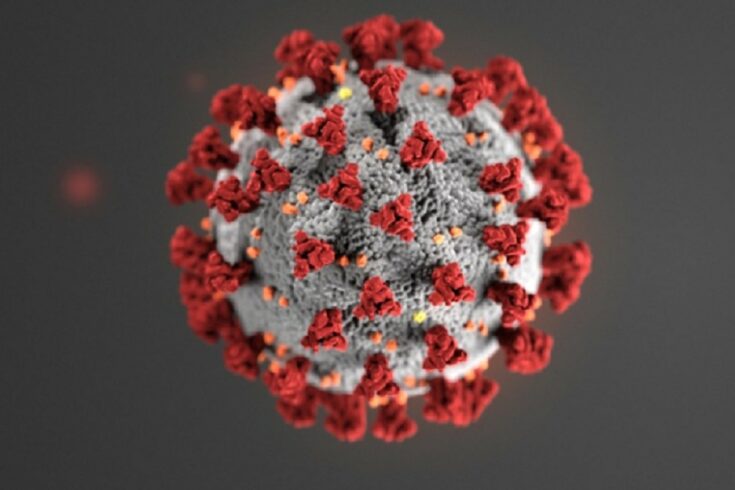Scientists from across the world participated in teams during three successive hackathons to develop digital environmental tools that can help track, understand and predict the effects of COVID-19 and help lead to a greener post-pandemic future.
A digital sprint, featuring a series of hackathons, led by Cranfield University and the Natural Environment Research Council (NERC) has seen multiple projects awarded prizes for innovation and use of digital technology.
Prizes were awarded in four categories:
- air quality
- recovery
- ecosystem services
- visualising risk.
It is hoped that the winning projects can be developed into tools to help both policymakers and the wider public better understand the impact of COVID-19 and mitigate its threat.
It is hoped that the success of the digital sprint will pave the way for more rapid response research funding calls in the future.
Winning projects
The winning projects include:
Air quality
A digital model was produced that analysed the impact of air quality and social factors, both in Italy and the US, on COVID-19 infection rates.
Their model demonstrated that if the Air Quality Index could be reduced by 2%, in the long-term, then infection rates would decrease by between 4% to 5%.
Recovery
An app was developed that optimises the number, and seating arrangement, of people who can safely use public transport to encourage its use, as an alternative to commuting by car.
The app explores train carriage layout, allowing the user to see the optimal spacing strategy in various scenarios of social distancing and includes the option of using plastic shielding, for increased isolation.
Primarily designed to feed into governmental policymaking and help train companies make decisions on how to design and optimise carriage use, the app can also be used by passengers as an aid to their optimal seating placement.
Ecosystem services
The winning team’s submission considered the relationship between green space and COVID-19 transmission.
They hypothesised that areas in the UK with more green space have lower rates of COVID-19 infection because they provide opportunities to spend more time safely outdoors, potentially leading to more compliance with lockdowns and social distancing guidance.
The data tentatively suggests that green spaces in an area can help to slow the spread of coronavirus during strict lockdown conditions.
Visualising risk
The winning team produced a map-based web application approach delivering localised risk information. The tool uses geolocation, showing a map presentation and related time-linked visualisation and case rate graphs.
The benefits to the public include providing an easy to understand explanation of the risks they may face, with simple and clear advice depending upon the estimated risk, and a link to official information and advice on COVID-19.
All the submissions to the hackathon can be found on the Digital Environment Github page.
Creative solutions
Dr Simon Gardner, Head of Digital Environment, Strategic Partnerships Directorate at NERC, said:
These creative solutions will help track, understand and predict the effects of COVID-19 and are an important step towards a more environmentally sustainable future.
My congratulations to the Digital Sprint winners who have responded so quickly to this challenge. It’s inspiring to see them develop these innovative tools so rapidly during the pandemic.
Professor Ron Corstanje, Professor of Environmental Data Science and Head of the Centre for Environmental and Agricultural Informatics, at Cranfield University, said:
In just a few weeks, we have seen what scientists, designers and engineers can achieve when they collaborate to solve a common problem. By using a digital sprint, we were able to produce solutions in a much more agile and creative way than with traditional research applications, with novel solutions produced in days rather than months or years.
While not necessarily right for every scenario, I hope that policymakers and research grant organisations will examine the effectiveness of digital sprints as a complementary alternative to traditional grant programmes.
I believe we have shown the effectiveness of digital sprints and I’m looking forward to seeing how these excellent projects progress into applied solutions to one of the world’s greatest challenges.
Professor Stephen Hallett, Professor in Applied Environmental Informatics, at Cranfield University, said:
Congratulations to all the teams who operated with determined speed and dedication in developing innovative novel environment tools and methods using digital technology. We know from initial research findings elsewhere that the environment can play a big part both in helping tackle and mitigate the effects of COVID-19.
The solutions that the teams have put forward could, with further development, really help policymakers, public health professionals and the wider public in the next stage of understanding and fighting COVID-19.
Niall McCarroll from Team Visigoths, winners of the Visualising Risk hackathon, said:
Our team enjoyed participating in the Hackathon and working on ways to effectively communicate and visualise risk.
A big thank you to Cranfield University and NERC for organising this, we felt it was a great opportunity for everyone involved to focus on an important issue and devise some novel solutions – we hope to see similar events in the future.

